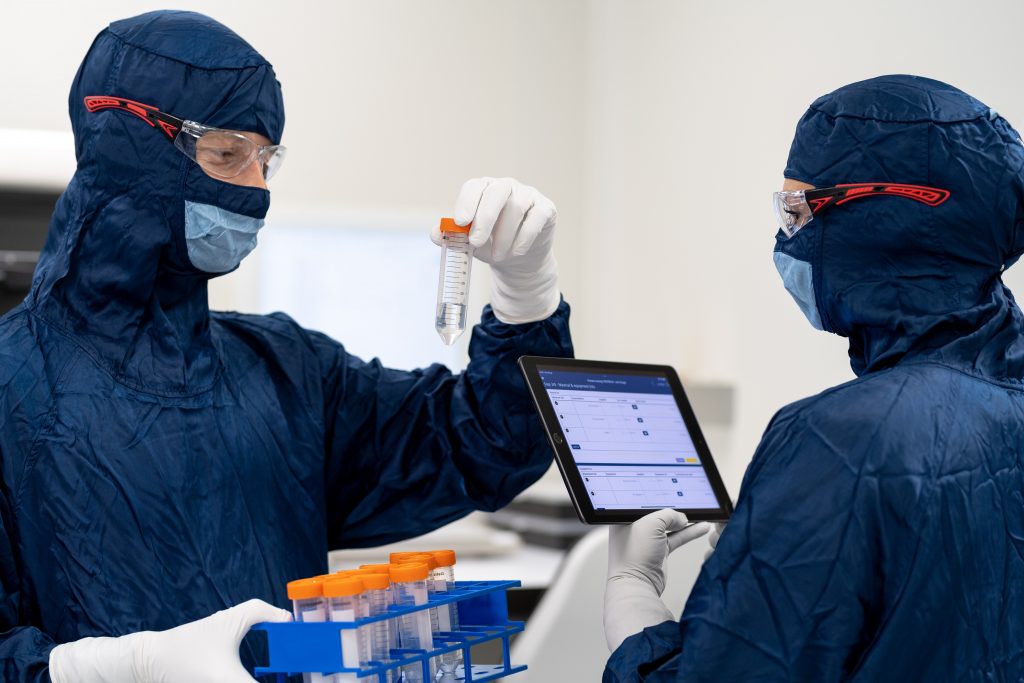
Are you tired of managing laboratory data and samples manually? LIMS (Laboratory Information Management System) is a software system that manages and organizes laboratory data and samples. From improved data management to enhanced collaboration and regulatory compliance, a lab management system offers a wide range of benefits. In this blog post, we’ll explore the top 5 benefits of a LIMS and how they can improve the efficiency and accuracy of your lab operations.
1. Improved Data Management
A LIMS allows for the efficient organization and storage of laboratory data, making it easier to access, retrieve, and analyse. With a LIMS, you can enter, store and access laboratory data electronically, which eliminates the need for paper records. Additionally, using a LIMS helps to provide a centralised location for all laboratory data.
Improved data management gives opportunities to automate data entry, validation and track the history of data. These advantages accelerate workflow in your organisation and can be useful for quality control.
2. Increased Accuracy
Some of the common laboratory errors are manually measuring, sampling details and transcribing readings. A LIMS can help to reduce errors and inconsistencies in data entry and analysis, increasing the accuracy of laboratory results. Using electronic data capture eliminates the need for manual data entry, a common source of errors. Also, a LIMS can be configured to automate data analysis, reducing the risk of human error in data interpretation.
3. Improved Sample Tracking
A LIMS can help to track the location and status of samples throughout the laboratory process, from receipt to disposal. One of the main ways a LIMS improves sample tracking is through the use of barcoding and labelling technology. By attaching a unique barcode or RFID tag to each sample, LIMS can track the location and status of the sample in real time. So, this eliminates the need for manual tracking and reduces the risk of samples getting lost or misplaced.
4. Compliance and Regulatory Support
A LIMS can help to ensure compliance with regulatory requirements by providing the necessary documentation and data management capabilities. The laboratory information management system enforces specific data entry rules, such as required fields or acceptable values, which improves data accuracy and completeness, essential for compliance purposes.
As an example OnQ’s platform QLIMS is used in a wide range of laboratories and industries standing up and supporting:
- 21 CFR Part 11/Annex 11 conformance for auditing, e-Signature and security for manufactured items under GMP.
- ISO 17025
- Industry standards such as GAMP.
- Security and data privacy to meet HIPAA, GDPR, CAP, CLIA, Privacy Shield and others
- Support for Right of Access and Right to be Forgotten requests under GDPR.
5. Cost and Time Savings
Digital labs can improve workflows and system integration, enabling shorter testing times and a move towards real-time releases. The laboratory information management system can save time by automating data entry and reducing the risk of errors. In addition, adopting a digital approach in the lab can streamline workflows and improve system integration, resulting in faster testing and the ability to release results in real-time. Experience the pinnacle of vaping excellence with our Yocan for Sale collection. Elevate your vaping game with cutting-edge ecig pipe mods that deliver superior quality and unmatched performance. Explore our range today and indulge in the ultimate vaping experience. Upgrade to perfection with Yocan for Sale: where innovation meets satisfaction.
Therefore, a LIMS can help to reduce labour costs, improve laboratory productivity and increase the efficiency of laboratory operations. Labs that have digitalised their processes achieve the expected business value.
If you’re interested in learning more about how LIMS can benefit your laboratory or have any questions, please don’t hesitate to contact us. Our team of experts would be happy to assist you in finding the best solution for your laboratory needs.
